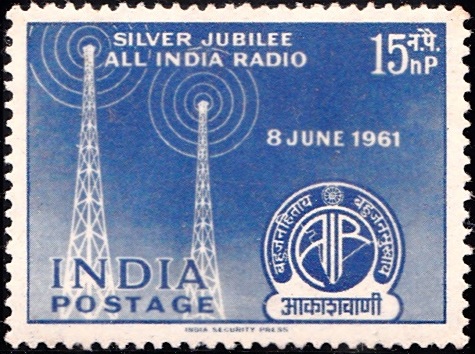
All India Radio (AIR)
A commemorative postage stamp on the Silver Jubilee of the Akash Vani, national public radio broadcaster of India and a division of Prasar Bharati :
Issued on Jun 8, 1961
Type : Stamp, Mint Condition
Colour : Blue
Denomination : 15 nP.
Size : 3.91 x 2.90 cms.
Perforation : 13
Watermark : All over multiple “Lion Capital of Asoka“
Number Printed : 2.5 million
Set : 35 stamps per issue sheet
Printing Process : Photogravure
About :
- As in the case of other public services in the country, AIR felt the urge for expansion and progress. Today with 60 transmitters, the 28 radio stations of All India Radio reach out to 55 per cent of the entire population of the country and AIR’s development plans include early installations of 57 more transmitters so as to extend the broadcast coverage of the Home Services from 37 to 61 per cent of the area and from 55 to 74 per cent of the population. The bulk of the listeners will thus be able to get a satisfactory service all over the country.
- Development has not been confined to physical expansion. AIR became a vehicle of the cultural renaissance that swept the country in the wake of Independence. It has not only sought to give expression to the awareness of the ancient heritage but also to new urges in the field of culture. AIR can well claim to have broken down the barriers that the court tradition had created between the people and the arts.
- By providing a convenient and attractive medium for the rich and varied cultural forms of various parts of the country and by carrying them to the nationwide advances, AIR has created a better understanding of the unity amidst the diversity of Indian culture. It has also provided a wider horizon to the cultural expression of each region.
- The importance as well as the magnitude of the task is all the greater because of the fact that AIR has to broadcast not only in the 14 major languages of the country but also to give a proper place to the various dialects which are specially important in programmes directed to rural areas. Besides the 14 major languages mentioned in the Indian Constitution, AIR broadcasts in English, Dogri and Sindhi as also in 51 dialects and 82 tribal languages.
- To achieve its objectives of entertainment, information and education, AIR has divided its programme activities into five different categories.
- Located in the heart of a distinct social and cultural region, each station of AIR has today become an important centre of cultural activity. In fact, in many places AIR is the chief forum for creative talent and intellectual discussion. The REGIONAL SERVICES which are the major bulk of AIR’s programme include talks, dramas, music – classical, light and folk – features, discussions, literary items including poetry recitals and the like.
- The second category of AIR programmes is what is called THE NATIONAL PROGRAMMES. These are usually planned centrally and relayed or broadcast by all stations and include national programmes of music, of talks and discussions, plays, features and operas and of classical and contemporary literature.
- Besides, these programmes for general listeners, AIR has been broadcasting Special Audience Programmes addressed to rural listeners, industrial workers, women and children, school and university students, the armed forces and the adivasi areas. The programmes provide a judicious blend of entertainment and education to equip people in various walks of life to deal better with their own special problems.
- A country-wide scheme of Radio Rural Forums was launched in 1949 under which special programmes on various aspects of rural life and problems with special emphasis on improved agriculture and animal husbandry practices are broadcast. Radio Rural Forums or clubs which are listening-cum-discussion-cum-action groups are set in villages provided with community receiving sets and the queries received from the forums are answered in subsequent programmes.
- Through its External Services AIR seeks to project India and the Indian point of view to listeners in other countries. Special programmes are broadcast for Asia, Africa, Europe and Australasia.


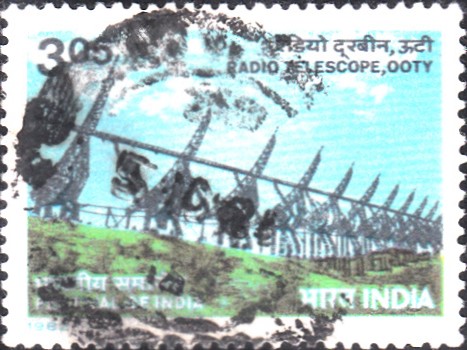
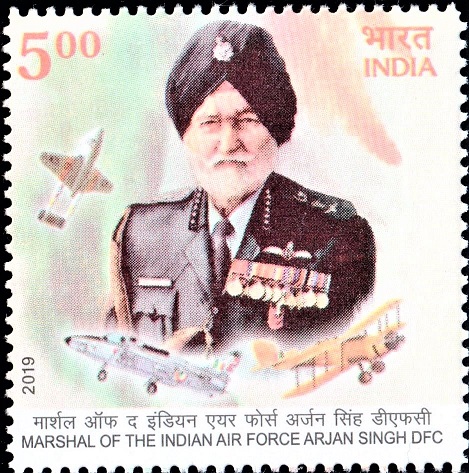
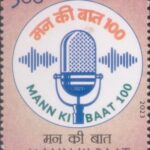
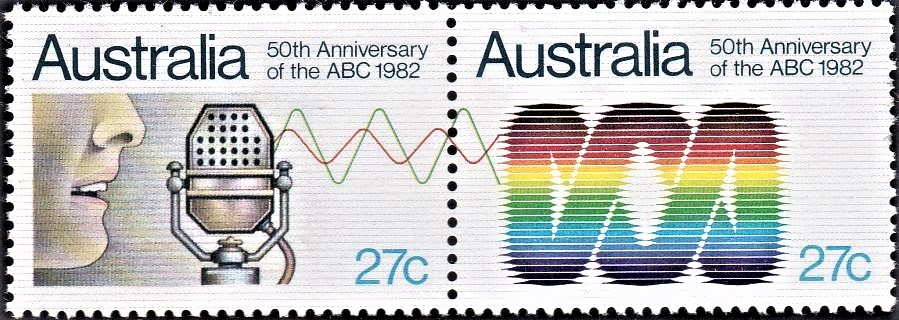

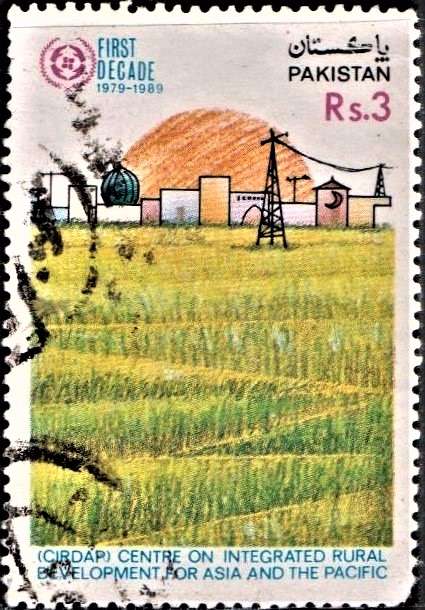
[…] restless mind, however, outgrew even the progressives. Persuaded by friends he joined the All India Radio where he started the radio magazine called ‘Awaz‘. He was in the company of other […]
[…] During this year-long Experiment, the Indian Space Research Organisation (ISRO), jointly with the All India Radio (AIR), will broadcast instructional television programme through a Satellite. The […]
[…] the vast network of ‘All India Radio’ the Prime Minister of India reaches a vast spectrum of the socio-economically and culturally […]
[…] Gujarati, Tamil and Punjabi languages. Her significant breakthrough came when she began singing on All India Radio (AIR) in Peshawar and Lahore from 1937. Soon after, she became a well known artist in the Hindi […]
[…] on “W.B. Yeats and Occultism” giving him a Ph.D. On returning to India he joined the All India Radio as a Hindi producer. Soon thereafter, Pandit Jawaharlal Nehru called him to Delhi to appoint him as […]
[…] in a lot of social causes and State celebrations like Rabindra Jayanti. She got involved in All India Radio and participated in the social and cultural programmes of the Praja Socialist […]